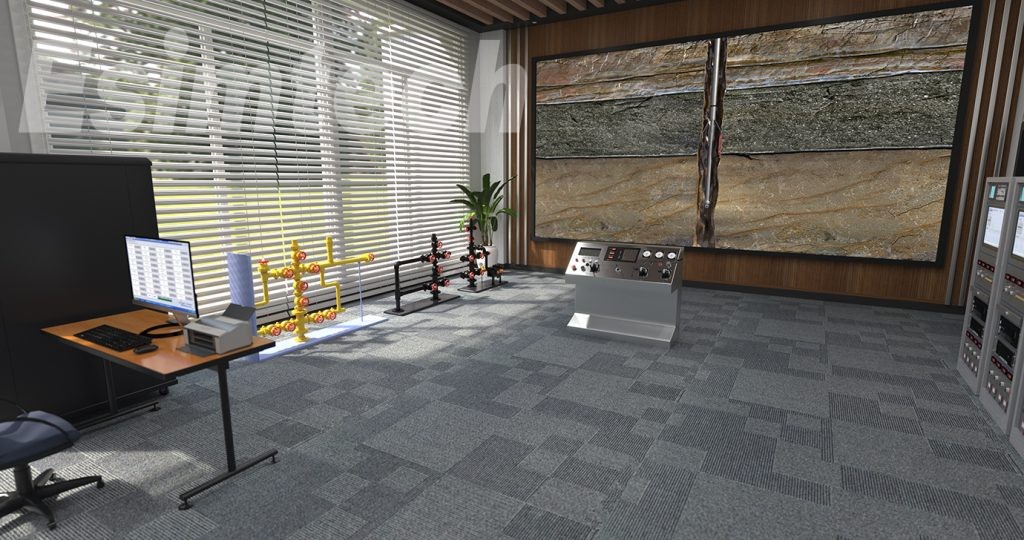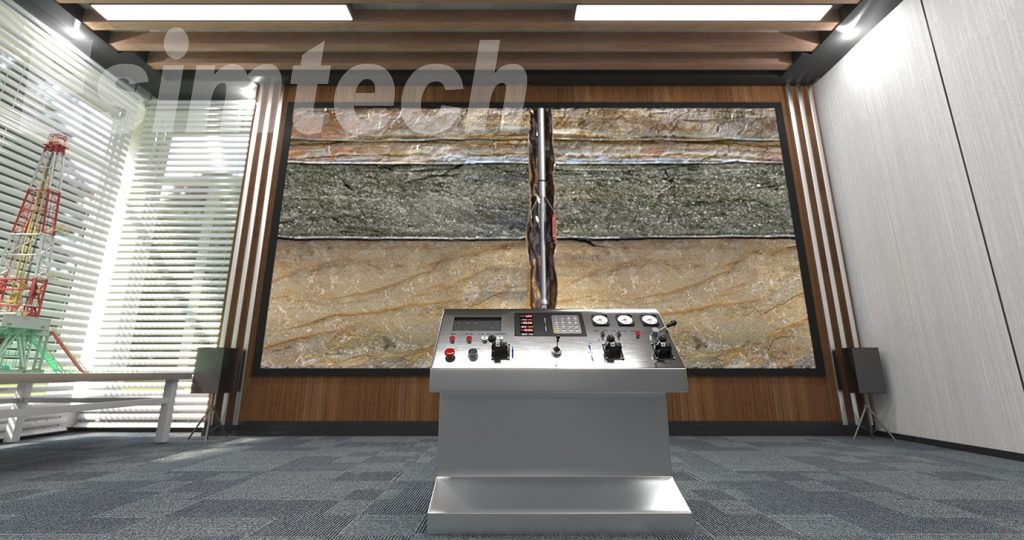Esimtech provides 3 types of well logging simulators, more customized products according to specific needs available.
Production Well Logging Simulator
The production well logging simulator conducts pre-job training and skill assessment for logging technicians and workers by using logging theory, virtual reality technology, computer technology, multimedia technology, etc.

What are the training programs?
1. Operation training for wellhead workers
The training items include wellhead test valve or non-test valve tubing injecting operation, wellhead test valve or non-test valve casing injection operation, and wellhead test valve or non-test valve oil pumping operation.
2. Operation training for winch workers
Training items include normal descent, normal ascent, obstacle descent, and obstacle ascent.
3. Operator operation training
Training programs include five-parameter comprehensive logging, oxygen activation logging, impedance logging, audio logging, caliper logging, electromagnetic flow logging, single magnetic orientation logging, and pre-magnetic orientation logging.
Open Hole Well Logging Simulator
The open hole well logging simulator has the same operating consoles and panels as the real equipment. By using 3D technology to demonstrate the structure and working principle of logging equipment, the entire process from logging preparation to completion. And through the combination of live scenes and live sound effects synchronized with the operation, a real training environment is created.

What are the training programs?
1. Training programs for wellhead workers
Including wellhead equipment installation, bridle production, the connection of logging tools, casing injection operation without test valve at the wellhead, cut-threak freeing and fishing, equipment disassembly, etc.
2. Winchman’s training program
Includes normally raising, normally lowering, etc.
3. Various animations
Various logging methods are included: conventional resistivity logging, lateral logging, spontaneous potential logging, microresistivity logging, acoustic logging, gamma-ray logging, induced well-logging, density logging, open hole diameter logging, neutron logging, etc.
Introduction to various logging operations and maintenance: introduction to basic logging material, maintenance of logging wellhead equipment, making and maintenance of bridle, basic operation and maintenance of surface unit, working principle and maintenance of basic downhole logging tools, the technology of cable perforation, the technology of tubing conveyed perforation, the technology of open hole logging and horizontal well logging. These various operational animations are used for the learning and training of technicians and workers.
Compound Logging Simulator
The whole process of composite logging is introduced by using advanced logging software, a full-scale logging machine room designed by Esimtech, a sand table well site model, drilling accident modeling software, and sensor detection software. Composite logging simulators are used to train operators, training center logging staff, and petroleum academies. Through the training of this system, the trainees can master various operational skills to deal with drilling accidents.
What are the training programs?
1. Tripping in operation
Including lost circulation when tripping out, kick when tripping out, oil or water immersion when tripping in, kick when tripping in, blowout when tripping in, getting blocked when tripping in, stuck pipe when tripping in, nozzle plugged, and abnormal standpipe pressure.
2. Monitoring circulation and static state
Including lost circulation, oil or water immersion, overflow, kick, and blowout.
3. Accidents when drilling and reaming
Including bit service life end, bit wore out, drilling string broken, lost circulation, well immersion, overflow, drill pipe not well braked, percussion drilling, lost nozzle, stuck pipe, wall collapse, pump water feeding failure, high-pressure pipe leaking.
4. H2S detection
Including formation H2S and non-formation H2S.
5. Monitoring formation pressure
6. Damper failure